Visiting Corbin Distillery
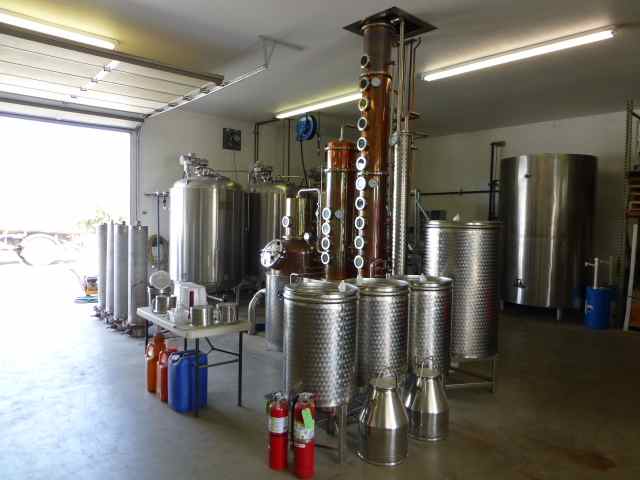
Since I was going to be in Modesto this weekend, I figured why not truck it on down to Atwater and meet David Souza at his home distillery. We're planning a big email later this month concerning his new Corbin Cash Merced Rye Whiskey, so it might be nice to have a few photos to help highlight the promotion. Plus, I was just plain excited to see a local Central Valley distillery. My dad and I made the thirty minute drive down Highway 99 and exited into farm country just north of the Atwater city limit. When we pulled into the driveway we could see the Holstein still through the open garage door. That's when I realized I had forgotten my camera and would have to use my iPhone for the rest of the appointment; hence, not nearly as high a quality of photo as I would like. Bummer.
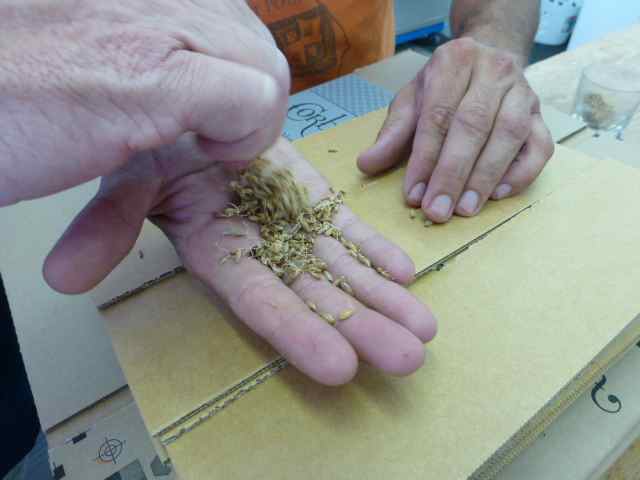
David and Erik were there to greet us and take us immediately over to their makeshift mill, currently grinding down a few sacks of freshly-harvested rye. They've got the science down with their milling, but they're lacking in speed at the moment. David is working on a few solutions to help the scale of production, but it seems to have been working fine so far.
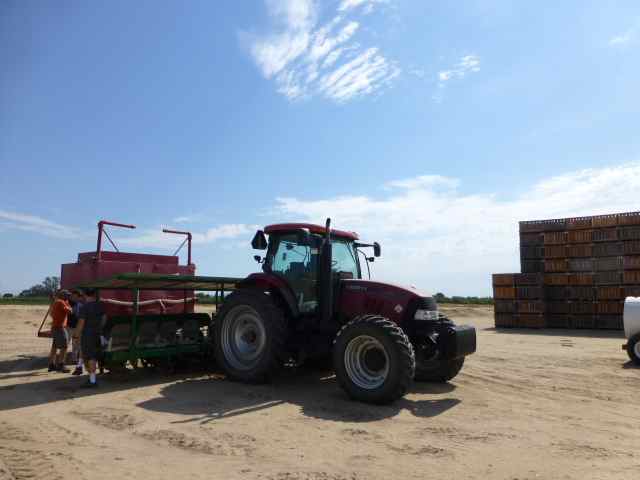
I've seen a hundred different distilleries in my time with K&L, so I didn't need a run down on the fermentation tanks or the still practice—what I wanted to see was the farm. Corbin is one of the only distillers I know of that handles every aspect of their production—from the seed to the bottle. We all hopped in David's truck and drove out to one of his many sweet potato fields where we got a lesson in potato planting.
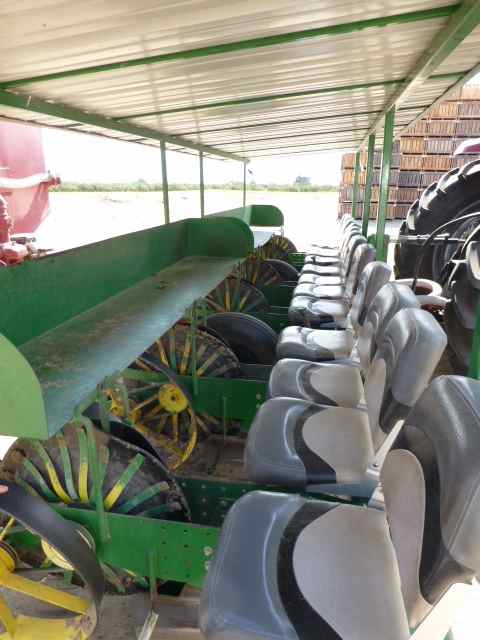
A twelve-seat plough is used to plant new sweet potato seedlings into the earth. In order to get a seedling you first have to take harvested potatoes, pile them up in rows, and then cover those hotbeds with a few inches of dirt. The potatoes will eventually sprout and produce new vines that are then clipped by hand and placed into little bags. The twelve men on the plough then pull these seedlings from the bag and place them one-by-one into the wheel mechanism that deposits the plant down into the earth.
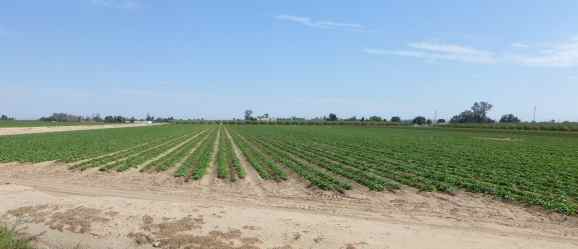
You can see the already-growing rows of sweet potatoes all around you in Atwater.
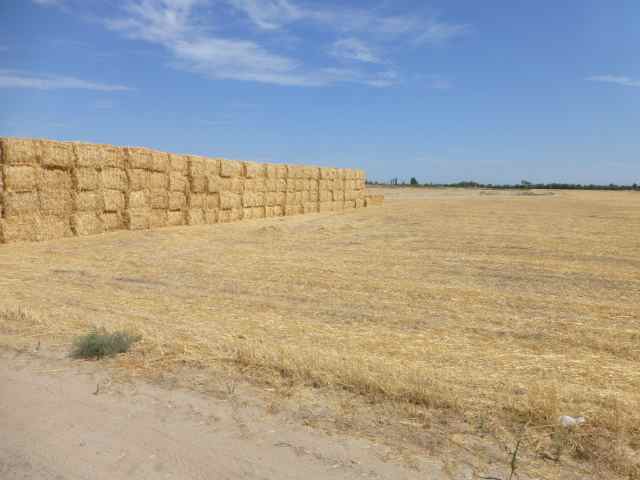
Of course, David's family has always used rye as a rotator crop to help replenish the soil once a crop of sweet potatoes has been harvested; which is how why they also decided to make rye whiskey in addition to sweet potato vodka. There are therefore fields of freshly-harvested rye scattered in between the rows of sweet potatoes.
We were lucky enough to see a sweet potato harvest as well. A slowly-moving plough, pulled by a giant tractor, digs about twenty inches into the earth and pulls everything out onto a conveyor belt where hired workers sort through the selection and organize the potatoes by type and grade.
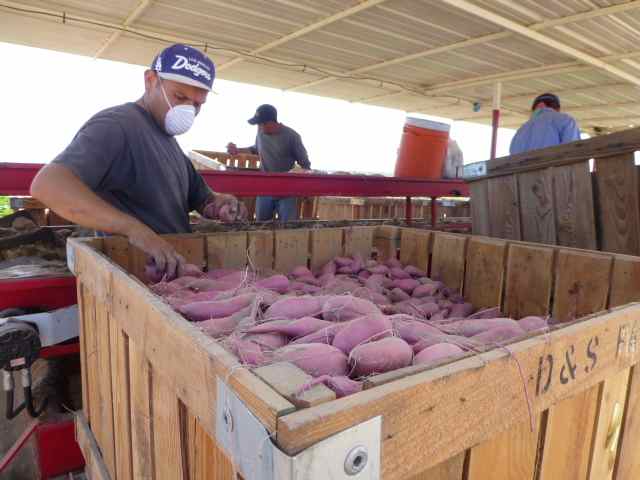
Some potatoes go to market, and some go back to the distillery for distillation purposes. David told us, "Before we founded the distillery, we were selling the extra sweet potatoes for cattle feed, but we would only get about $5 per 1,000 pound container." Distilling the unsalable surplus was a much more attractive idea (and fun!).
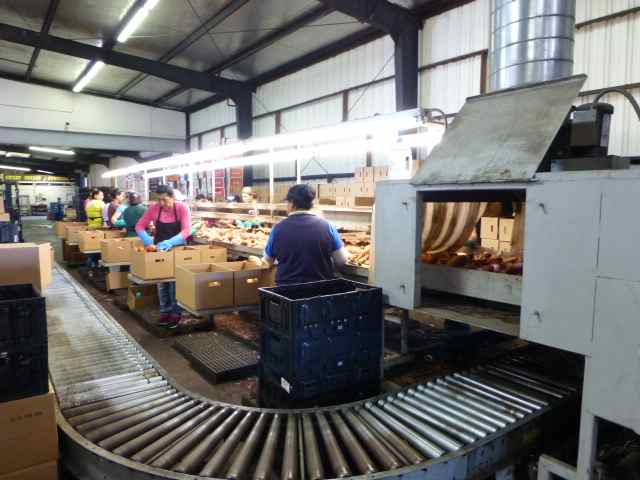
After the potatoes are harvested, they're washed and then boxed up by workers on the assembly line nearby. When you talk about "handcrafted" spirits, the Corbin products bring that over-used (and often ill-fitting) term to an entirely new level. Hundreds of Corbin hands are touching these sweet potatoes long before they ever get cooked and fermented.
Visiting a distillery is a great way to put a name and a place to the products we enjoy drinking. Visiting David and Erik at Corbin today, however, was an entirely different experience. It was more about farming than anything else—and, let me tell you, these guys know a lot about farming sweet potatoes. And their spirits are pretty damn good, too. Visiting Corbin is more of a reminder about what's going into your spirits, long before they're ever distilled.
-David Driscoll
